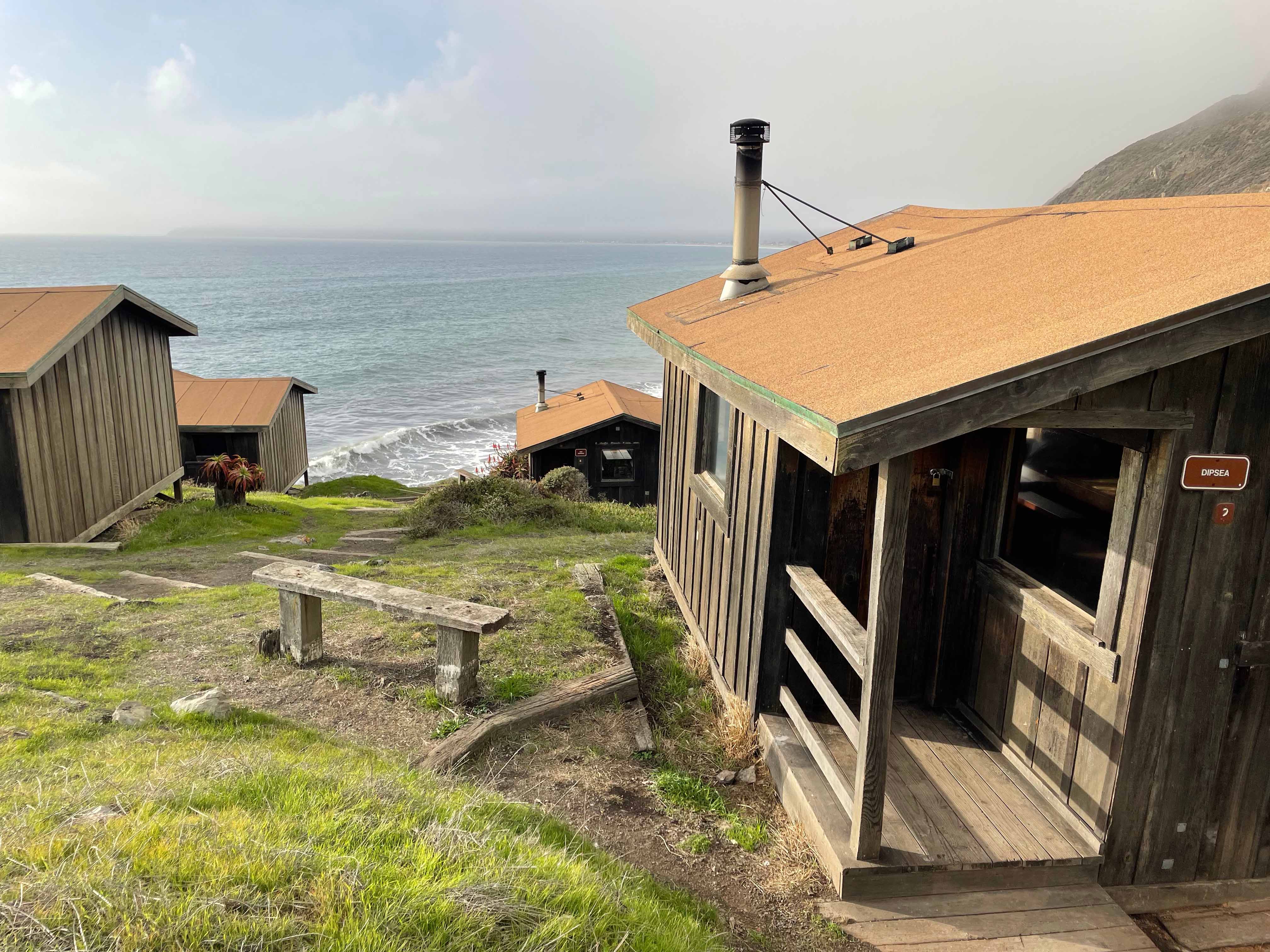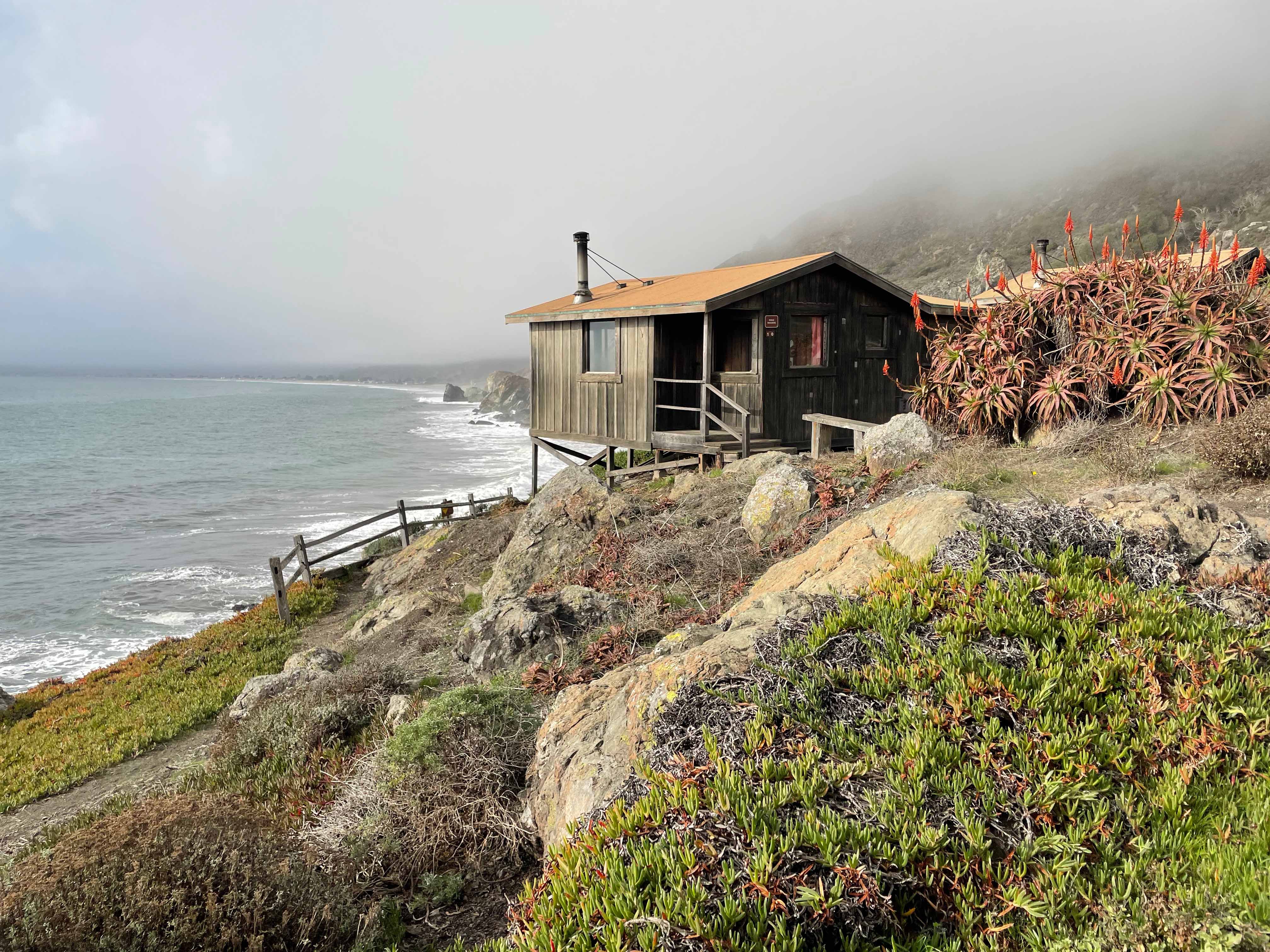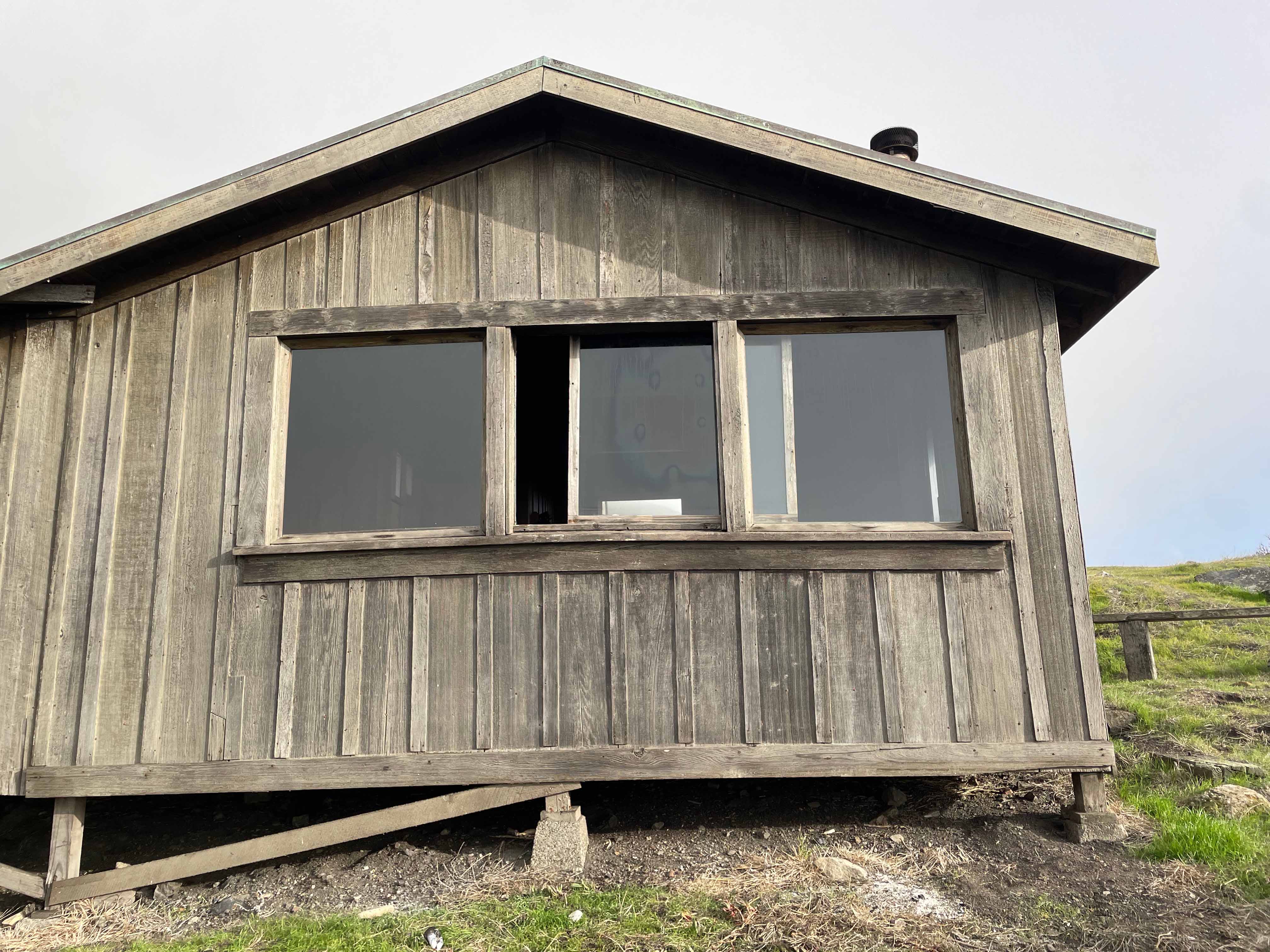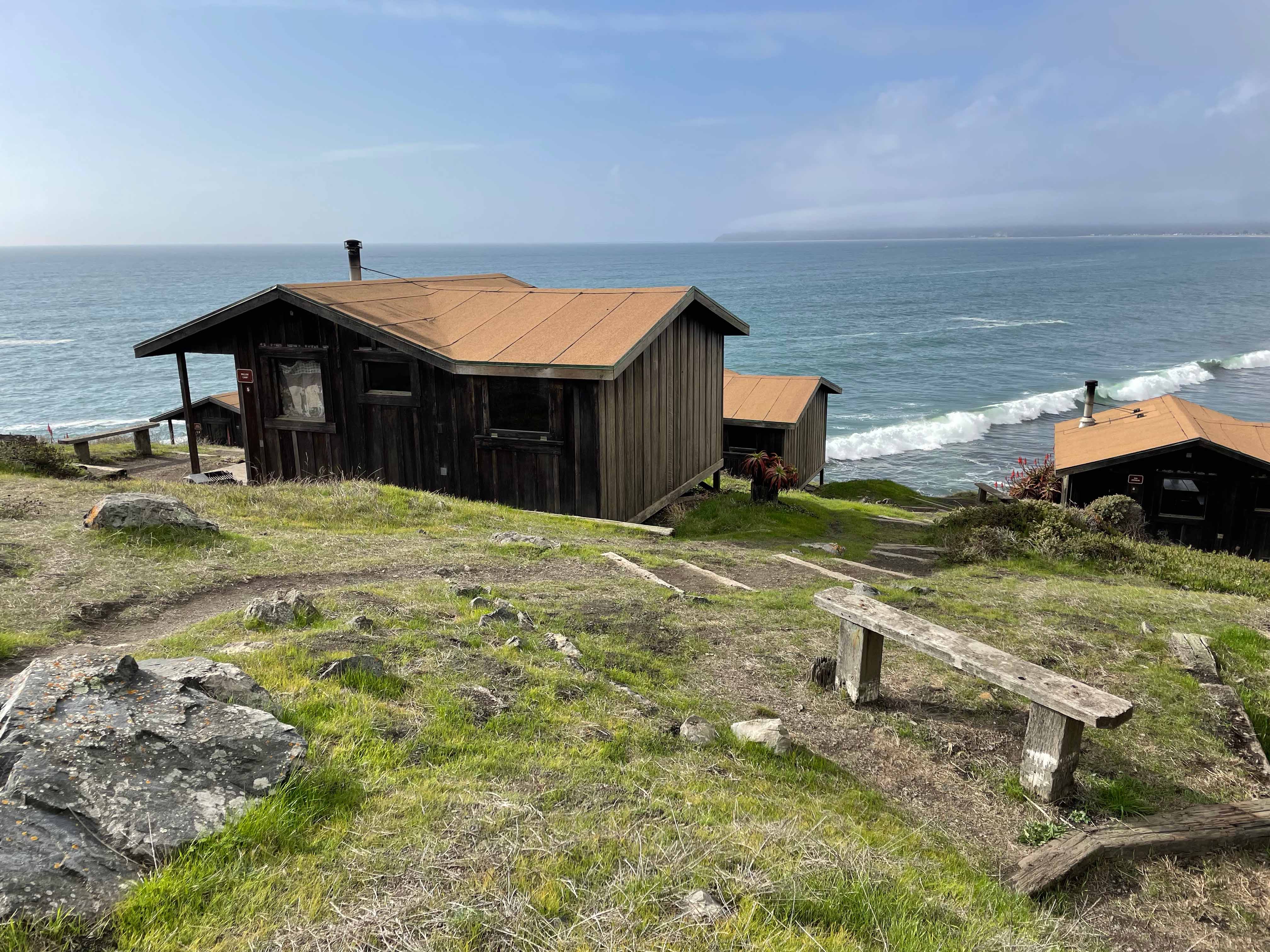Steep Ravine Cabins, CA 2024

Just north of the iconic Golden Gate Bridge awaits our next beach front volunteer opportunity on the coast of California!
PROJECT PARTNER: Mt. Tamalpais State Park
SESSION DATES: October 13-18, October 20-25, and October 27 – November 1
PROJECT SUPERVISORS: Pete Cecil (Session 1 & & 2) and Aric Smejkal (Session 3)
ASSISTANT PROJECT SUPERVISOR: Jack Spano
CREW LEADER: Lesia Grant (Sessions 1 & 3) and Amanda Mantzouranis (Session 2)
Project Site Description & History
The beautiful man-made arches of the Golden Gate Bridge form a striking contrast with the soaring rugged peak of Mount Tamalpais, a beloved part of the San Francisco landscape. Mount Tamalpais State Park is home to the historic Steep Ravine Cabins, which provide campers with an unparalleled view of the Marin Coast. The cabins are one of the most popular (and hardest to reserve) camping areas in the California State Parks system; HistoriCorps volunteers will have the very unique opportunity to restore these beloved cabins.
The Steep Ravine Cabins were built in 1938 by California congressman William Kent, who also donated the land which is now Muir Woods, as part of a plan to create a railways system through the area. At the start of World War II, the US army took over the land around Steep Ravines to support the war effort. The Kent estate sold the land to California State Parks in 1960, who demolished three of the most dilapidated cabins. From the end of World War II through the mid-1970s, the cabins were available for year-long leases. Renowned photographer Dorothea Lang rented a cabin with her family for several years.
Mount Tamalpais lies just east of the San Andreas fault and provides shelter to wildlife such as raccoons, gray foxes, bobcats, black-tailed deer, mountain lions, many species of birds, and diverse and beautiful flora. Whale watchers can see gray and humpback whales from the mountain’s rocky outlooks. The Coast Miwok people lived throughout modern-day Marin County, using the bountiful natural resources of the area to trade for locally unobtainable goods. The name of Mount Tamalpais roughly means “bay mountain” or “coast mountain” in the Miwok language. The area was first settled by white European colonizers in 1770, when two Spanish explorers came to the area. Modern-day San Francisco wasn’t broadly settled until the discovery of local gold in 1848. In the 1930s, the Civilian Conservation Corps also built extensive infrastructure in the Mount Tamalpais State Park area.
Join this legacy of historic preservation surrounded by natural beauty, and sign up to volunteer with us at Steep Ravines!




Location and Logistics
SESSION DATES: October 13-18, October 20-25, and October 27 – November 1
Please plan to arrive at the campsite no earlier than 5pm and no later than 7pm on the first day of your session.
LOCATION: Located approximately one hour north of San Francisco.
ACCESS: ![]()
![]()
![]()
![]()
Tents are preferred by our partner and limited space is available for truck-campers and campervans at our campground. There are no showers and dogs aren’t allowed.
WEATHER: Anticipate highs in the 60s and lows in the 50s. Weather conditions may be rainy, cloudy, or sunny. Volunteers are responsible for checking weather conditions before their session begins, and packing appropriately.
Scope of Work
HistoriCorps is committed to educating and training volunteers in preservation skills, with an overarching mission of inspiring a preservation ethic in all those involved. Learning and working alongside expert HistoriCorps field staff, volunteers and applying the traditional skills necessary to restore the Steep Ravine Cabins:
- Lift and stabilize cabins 2-6
- Improve foundations under cabins
- Lengthen foundation posts under the cabins
- Construct porch steps and other finish work as needed.
- If time allows, repair flooring and interior work as needed.
Please note: Tasks vary by day and by week, depending on a variety of factors including: weather, project priorities, previous groups’ work, and more. Though it is likely you will get to learn and practice most or all of the above tasks, it is not guaranteed. The higher percentage of the scope a particular task is, the more likely you will get to practice it.
Sign Up!
We’re thrilled this project has inspired you to volunteer!
CLICK HERE TO REGISTER!
Visit our Job Calendar to see spaces are available!
*All registrations submitted to projects at capacity will be automatically added to our waitlist.*
CANCELLATIONS effect our ability to complete projects. Please register only if you are certain about your ability to participate.
You will know your registration was successful when you receive a confirmation email. Contact volunteer@historicorps.org for assistance.
HistoriCorps does not charge for its volunteering projects. HistoriCorps relies on donations to continue engaging volunteers to save significant historical sites across America for generations to come. Your donation of any amount will make an incredible difference! Increase your impact – make a generous gift today.
Volunteer Logistics, Policies, and Advice
We’re so glad you’re interested in joining this project! If you’re new to our community, review the Volunteer FAQ first! Please note the following logistics and policies:
- Volunteering with HistoriCorps is free! We will provide all meals, tools, training, equipment, and a campsite or shared indoor lodging. Dinner is not provided on the first night.
- Volunteers are responsible for bringing their own gear, work gloves, sturdy work clothes and boots, and appropriate sleeping equipment. Check the average temperatures before you start packing – the nights and mornings may be colder than you anticipate! Then, read this advice about how to stay warm when tent camping in colder places.
- Campsite accessibility varies by project. Some projects can accommodate tents only; others can accommodate small RVs. Please review the project site description above for more information, and if you’re still not sure, email volunteer@historicorps.org for help.
- If this project does not offer showers, you might want to consider bringing a solar shower or research other methods to clean up after the work day.
- Volunteer crew sizes generally range from 4-8 volunteers, with two HistoriCorps staff that lead and train volunteers in the work.
- Safety is one of HistoriCorps’ top priorities, and volunteers can contribute to a safe working environment by ensuring their physical fitness is adequate for the work. See above for this project’s scope of work and difficulty level. Please, call us if you are not quite sure if a project is a good fit for your skills or fitness level. We may be able to suggest a project more suitable and enjoyable for you.
- Hard hats, eye protection, ear protection, gloves are standard personal protection equipment (PPE) required on all projects. Hard hats must be worn at all times on the project site, unless working in a designated safe space. Field staff will train volunteers on correct use of PPE.
- Dogs are generally allowed to accompany their humans in project campsites (actually, we love having dogs join us around the campfire!). Dogs are not permitted on the job site for everyone's safety. HOWEVER: HistoriCorps also follows the rules and regulations of our project partner. If the project partner does not permit dogs onsite then HistoriCorps is no exception. Please ask HistoriCorps or the project partner directly if you have any questions about whether Fido is welcome.
